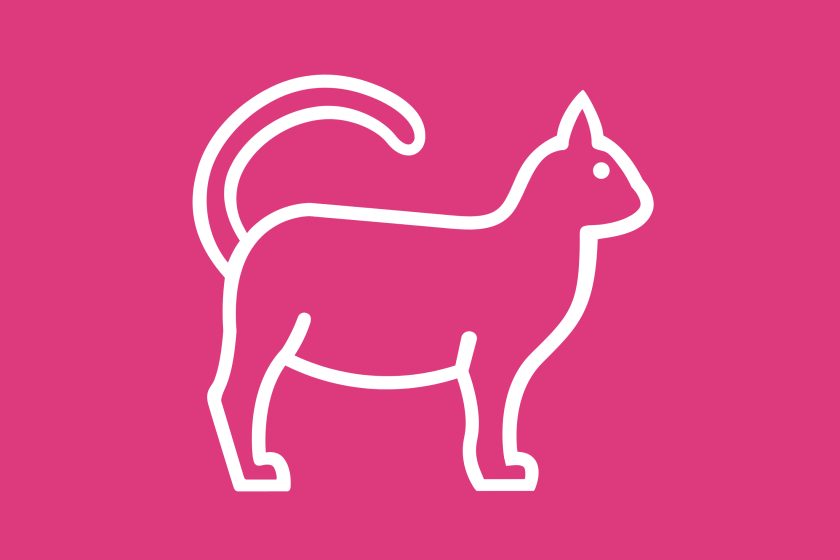
Organ Meats
Many of our frozen products contain organs and also have a range of NZ-grown organ treats. Organs are rich in vitamins and minerals including B Vitamins and A Vitamin and they are packed full of Essential Fatty Acids.

Many of our frozen products contain organs and also have a range of NZ-grown organ treats. Organs are rich in vitamins and minerals including B Vitamins and A Vitamin and they are packed full of Essential Fatty Acids.
More information on the important of organ meats and the excess of cadmium (a heavy metal found in soil) which can enter the food chain via fruit, vegetables and organs of livestock.
A balanced raw diet should contain organs in approximate prey proportions. An easy way to add organs into your pet's diet is by feeding our wild prey mixes with organs such as Possum Mince or Wallaby Mince. Or adding a small amount of one of our Organ Mix or Wild Organ Mix which are purely minced organs. Keep in mind that organs are very rich, so it's best to feed them in small quantities a few times a week. Alternatively Powermix our freeze dried organ powder is packed full of nutrients. This is a good source of organs for pets that don’t usually eat organs and is usually liked by most pets, including cats.
Organs are rich in:
YES! As part of our delivery service, we have tried to minimise waste wherever possible so have chosen a chilled courier service which means your order will just arrive in a cardboard box (no polystyrene boxes or unnecessary packaging).
Our packaging can be recycled as follows:
Variety is key! We recommend you feed a mix of meat, green tripe, organs, and raw meaty bones from at least three different prey sources per week.
See our article on Balanced Raw Diets for more information
The best diet for cancer prevention is a diet that provides the nutritional components required to maintain healthy cells and repair unhealthy ones.
If you can't access Raw Essentials product for any reason, here are some tips for successful raw feeding.

Feeding a raw diet is a bit like feeding yourself: you eat a variety of foods, with the expectation that this will meet your nutrient needs over time.
Many people think they need to include vegetables in their pets raw diet but, we are fortunate in New Zealand that we can readily access high quality green tripe for our pets.
Dental health is important for many reasons - as well as causing infection, inflammation & pain, bacterial build up in the oral cavity can disseminate and affect other parts of the body, including the heart and kidneys.
Feeding a raw diet is a bit like feeding yourself: you eat a variety of foods, with the expectation that this will meet your nutrient needs over time.
Our biggest tip for balanced raw feeding is to offer a mix of meat, bones, organ & green tripe from a variety of prey sources. As a rule of thumb, we recommend feeding from at least three different prey species over a week. Wild populations of cats and dogs eat meat, bones, organs, and often tripe. They do not just eat meat. Feeding an all-meat diet will cause mineral deficiencies, and is dangerous to your pet's health.
Healthy animals deal with large amounts of bacteria (just like they would in the wild). Stomach acid, bile and gut microbes control pathogenic (disease causing) bacteria. A raw-fed carnivore’s stomach is highly acidic and there aren’t many organisms that can survive it.
Factors that can contribute to salmonella disease can include: age, poor nutrition, quality of food, presence of other diseases, stress etc. We find that the risk of disease caused by salmonella can be controlled by having a healthy animal on a well planned raw food diet combined with sensible meat hygiene practices at home.
In most cases there is no need to add supplements to a well-planned raw diet, which means:
Some pets do well on a course of probiotics, or fish oils. In most cases, this supplementation is a temporary measure to control inflammation, and populate the gut with beneficial microbes in order to assist immune function.
However some cats and dogs have a very compromised immune system, and a major microbial imbalance in their gut. These are the animals that will suffer deficiency even on a really good raw diet, or a processed one. Unless the gut health of these animals can be significantly improved, they may benefit from continuous supplementation.

Raw feeding is easy and Raw Essentials offers ongoing support and advice. There are a few simple rules to follow to make it an enjoyable experience for your dog.

Kittens and puppies can enjoy a raw diet, too. Due to their growth spurts, monitor their condition closely and change their intake to suit their needs.

Here are a few simple rules to follow to make the transition to raw an enjoyable experience for your cat. Also check out Converting Cats.

The right nutrition, and a well planned species-appropriate diet, is the basis of better health and more energy and enjoyment for life. Follow these ten rules for planning your pet's diet.
The gut is our first line of defence against the outside world. The bulk of our immune system resides there and a healthy gut is required for good health. There are two major conditions negatively affecting the gut health of people and pets: leaky gut and dysbiosis.
At Raw Essentials we encourage customers to avoid mixing raw and processed pet foods. Your pet's gut processes these foods in different ways and can cause stomach upsets.
An overview of research that supports feeding pets their evolutionary diet, which covers the nutrient content of raw food; the non-nutritive aspect of raw food; and food safety issues (for human and pet health).
A brief overview of the three main areas of research in support of raw-feeding: the nutrient content of raw food; the non-nutritive aspects of raw food (i.e. dental health and behavioural enrichment); and food safety issues for human and pet health.
Raw feeders sometime find that results on some blood tests are slightly elevated. Here's some information, including research findings, explaining why this happens.
Mammals (including people, cats, and dogs) are home to trillions of microbes - they live all over us, but mostly in the gut. This article sheds light on the affect of microbes and includes links to more detailed research on microbes and health.
Many cats happily transition to raw food, but some will find it hard to shake their biscuit addiction. If your cat won’t quit the biscuits, try the method below, or talk to one of our staff for support.
Cats are obligate carnivores, meaning they have nutritional requirements that can only be met with a diet based on animal tissue. The macronutrient profile for cats is high in protein and fat, consistent with a meat and bone based diet.
Cats evolved to eat small prey animals. They cannot utilise plant proteins to satisfy their nutrient requirements. Wild cats eat a meat-based diet: high protein, moderate fat, minimal carbohydrate and a high moisture content.
We are regularly asked for advice on raw-feeding by people who are unable to access our products. A growing number of raw food options have become available in the supermarkets and in large pet-store chains, but there are issues that buyers need to be aware of.
Tom Lonsdale is an English vet and a strong advocate for raw feeding. This article discusses processed pet food and the detrimental impact it has on the health of cats and dogs.
An overview of common 'natural' marketing trends seen within the pet food industry, and what they mean.
As more and more consumers cotton-on to the fact that dogs and cats do best on a species-appropriate diet, pet food manufacturers rush to release products that have the appearance of being species-appropriate, but that can be made on the cheap. Most products in the U.S. are now marketed as 'natural', and now one in every two new products introduced to the market is sold as 'grain-free.'
Many people think hard about their food choices and we've become a nation of label readers. The information here will help to simplify the reading of pet food labels. But be warned - the current system of pet food regulation is ineffective at informing consumers and protecting pets.
An overview of pet food standards, product labelling and their dietary requirements, and how heat treatment through the manufacturing process impacts the nutrient profile of processed pet food.
Raw and processed pet food both carry Salmonella risk. This article explores the bacteria, its spread, and how safe handling of products reduces the risk for pets and owners, by following these guidelines, you can safely raw feed your pet.
It is commonly thought amongst veterinarians that raw-feeding poses a significantly greater risk, and on the basis of this, they warn against raw-feeding. This article analyses the 2012 AVMA (American Veterinary Medical Association) statement on raw-feeding.
An overview of the various preservatives found in processed pet-food and how they impact animal nutrition.

Our mixes are the foundation of a Raw Essentials feeding plan. There is nothing unnecessary added – all of our products are sustainably-sourced, traceable, and 100% natural.
Our chicken is from the human food chain. Depending on what is available we use a mix of free range and barn raised chickens for our mixes, necks and frames.
Nutrient imbalance is a risk for both processed and raw diets. Our biggest tip for balanced raw feeding is offering a mix of meat, green tripe, organs, and bones from a variety of prey sources.

We encourage feeding raw meaty bones to fully raw fed cats and dogs. Meaty bones provide cats and dogs with behavioural stimulation, dental benefits and appropriate nutrition - plus they love them!
Wondering if it's necessary to add supplements to your pet's raw food diet?
The health and function of the anal glands, gut health and nutrition is linked. A raw food diet can help dogs experiencing anal gland issues
Feeding variety ensures your pet eats a great range of nutrients. Here, we have some handy advice for feeding your pet a variety of prey species.
An excerpt from an article by Dr Lyn Thomson (founder of Raw Essentials).
Our approach to raw feeding is to emulating a prey meal as closely as possible. Given the limited amount information about prey proportions, we conducted a prey dissection project of typical herbivorous prey for our carnivores. We dissected 3 rabbits, 3 hares and 3 possums to provide some average percentages.
In November 2021 Dr Rebecca Brown presented at the RFVS conference on -
“"SHOULD YOU CREATE OR FORMULATE? THE GREAT DEBATE . . . "
WE FORMULATE...SORT OF
“Raw Essentials emerged from the recognition that, if we leave the narrow confines of reductionism, and widen our perspective so that our viewpoint includes evolutionary biology and nutritional ecology, it becomes apparent that what makes sense is minimally-processed, unadulterated, species-appropriate food - as nature intended it.”
WHY WE DO NOT USE AAFCO TO GUIDE OUR DIETARY PROTOCOLS
Product quality is our priority. We have strict regulations for sourcing, and sustainable wild harvesting practices that ensure top-notch quality. We also adhere to stringent food processing regulations, guaranteeing the safety and quality of our products for your pets.
Dr. Pottenger's Cat Study revealed the profound benefits of raw feeding for cats. Cats fed raw diets demonstrated superior health outcomes, including stronger immune systems, better skin and coat, and fewer health issues.

Transitioning your cat to a raw diet is a rewarding journey that can lead to improved health, vitality, and overall well-being. By following these expert transition tips, you can ensure a smooth shift to a raw diet and provide your feline with the optimal nutrition they need to thrive.